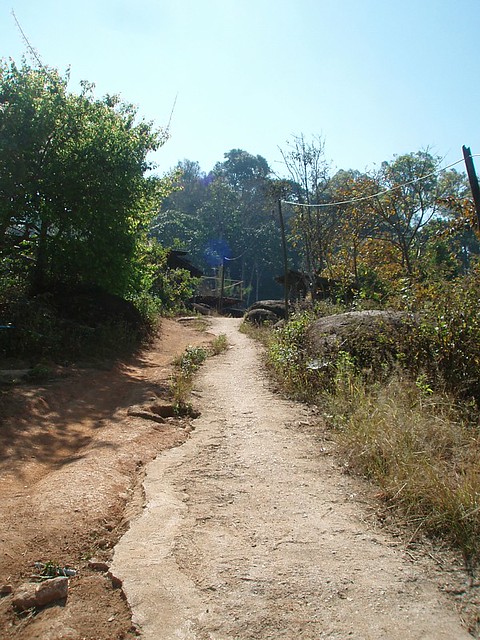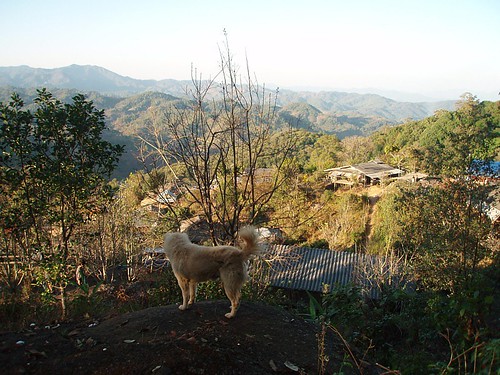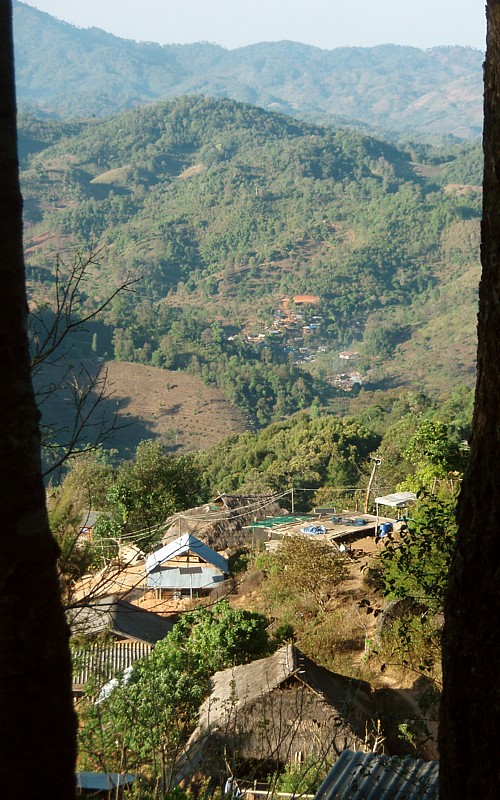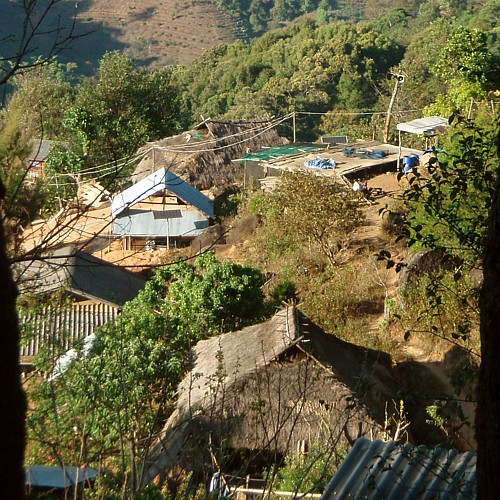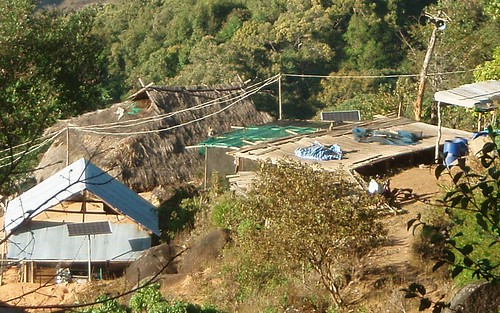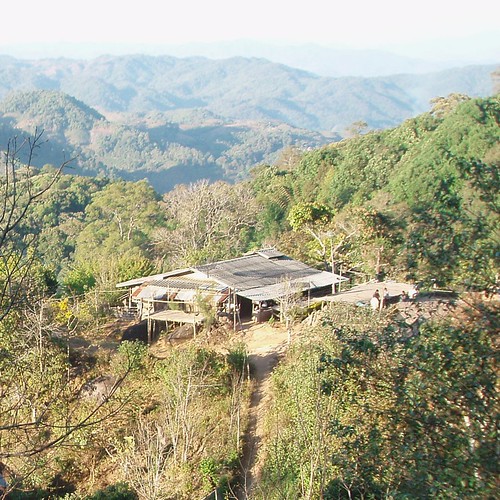Water filtration system by Engineers Without Borders USA's California Polytechnic State University San Luis Obispo student chapter:
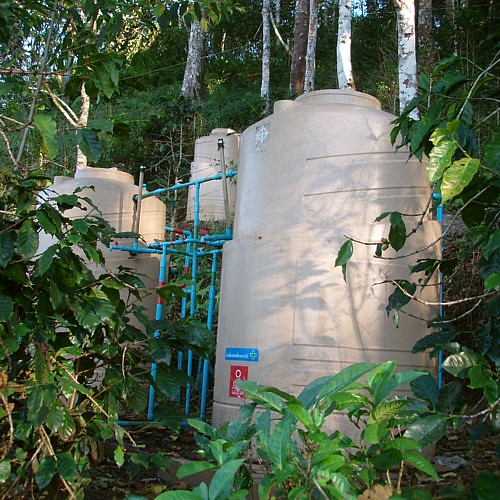
Small world - the cat has passed through San Luis Obispo before. A source of clean water makes a huge difference. Especially for women & girls, who bear the responsibility of fetching water & collecting & carrying firewood down from the mountains for boiling water to make it potable. The Coffee Journey participants drank from this system with no problems.
Many hilltribe villages in the upper north of Thailand have at least one signboard bearing the name of some foreign aid organisation or missionary group. Ban Maejantai was no exception:
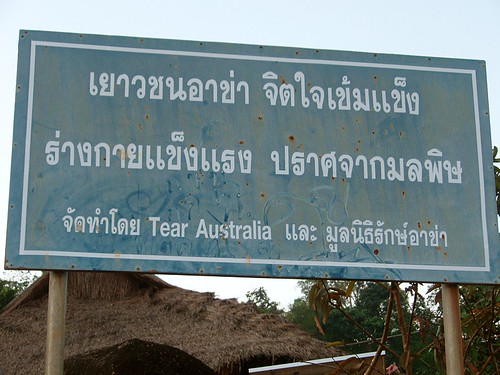
Roughly translates as...
"Akha youth Powerful mind
Strong body Free from pollution
Done by TEAR Australia (a Christian organisation) & the Akha Kinship & Holistic Alternatives Foundation (or AKHA Foundation, a Thai NGO)"
Leaving the cat none the wiser as to what it is about...
Not that there were many youths around. Like in rural villages across north & northeast Thailand, most have left to study or work elsewhere in Thailand or overseas. Like the Akha in Mae Salong, proximity to a Chinese village means that some in Ban Maejantai have picked up spoken Mandarin, leading to better-paying job opportunities in Taiwan. Left behind in the villages are the very young & the very old. Likewise for villages in the areas of Laos bordering Thailand - more than 90% of those aged 15-35 in a friend's village in rural Savannakhet are working (mostly illegally) in Thailand.
Next to Mimi's house - we thought it was a kindergarten:

Mimi mentioned about a teacher from elsewhere who stays here on weekdays, & that only 4-5 kids from the village come here. The signs around this building say something about a Mae Fah Luang study centre (for) community (of) upland Thai people, & ชมรมศึกษาพัฒนาชาวไทยภูเขา มหาวิทยาลัยรามคำแหง Ramkhamhaeng University's society for education & development (of) upland Thai people:


The cat usually hears hilltribe people referred to as ชาวเขา chao khao (hill people) or ชาวดอย chao doi (mountain people). On these signboards the term ชาวไทยภูเขา chao thai phu khao (Thai people (of the) hills/mountains) was used instead. Has been 26+ years since the cat first met hilltribe people in Thailand, perhaps the perception of them as outsiders (i.e. non-Thai) in the eyes of the lowlanders really is starting to change?
The temple at the top of the village:

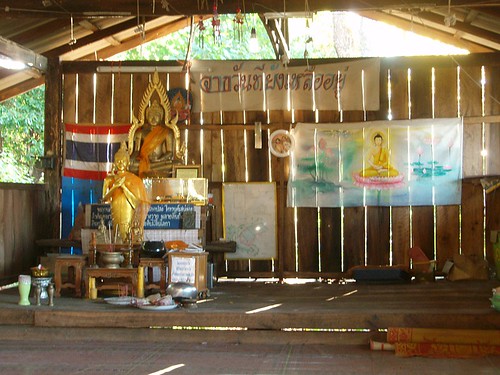
Only sign of a monk ever having been here was an old forgotten angsa (vest that covers only the left shoulder) hanging near some bushes.
Doing the dishes on the balcony:
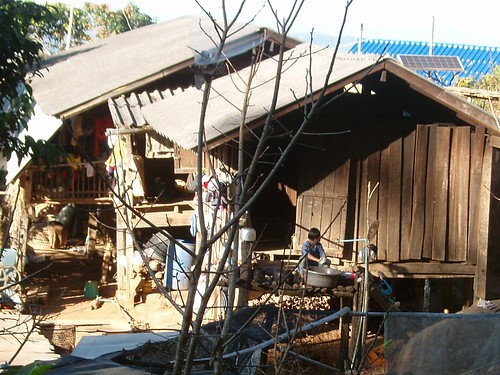
The black netting in front of her house provides shade for the coffee seedlings beneath:

The chicks that jumped into the feed container:


Hanging outside Api's house:

Mimi's house had an identical pair of wings hanging near the stairs to the kitchen.
Saddest looking puppy:


Didn't ask if anyone in this village eats dog.


